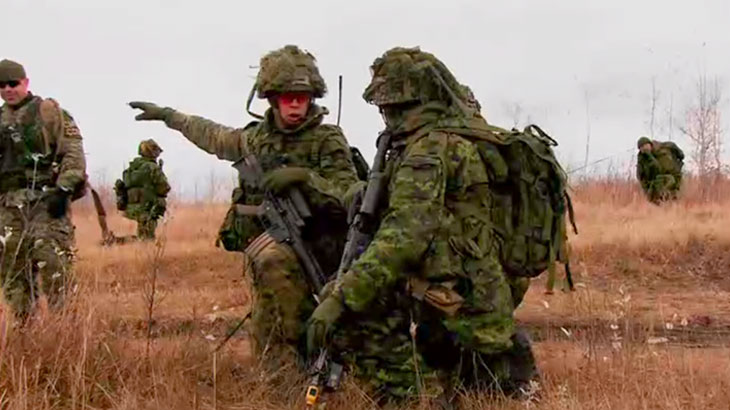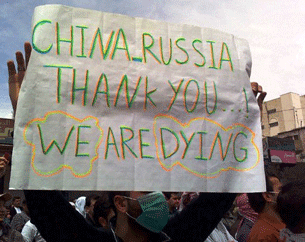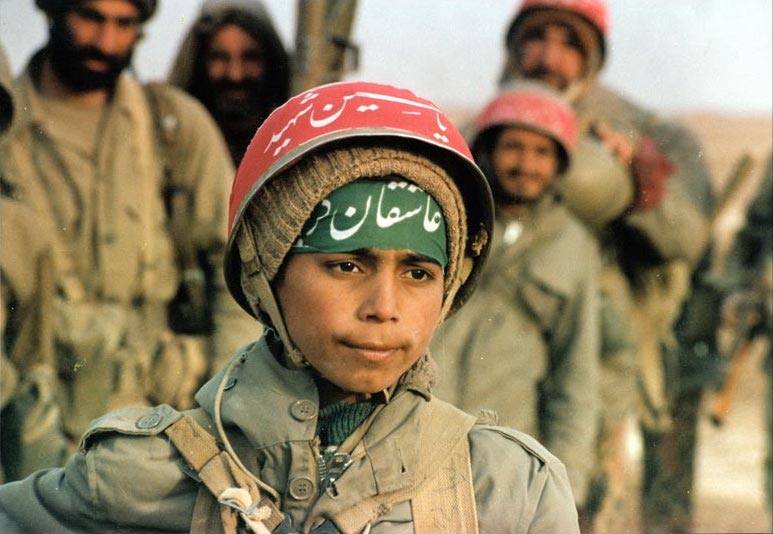 NATO is gearing up for Trident Juncture 2015, which promises to be one of the largest joint exercises in the Alliance’s history. Taking place from 28 September to 6 November, approximately 36,000 troops from 30 countries are expected to participate, along with involvement from the United Nations (UN), European Union (EU) and African Union (AU). For its part, the Canadian Forces will contribute 1,650 troops, who will operate on the territory of Portugal, Spain or Italy under the direction of Allied Joint Force Command (JFC) Brunssum, which is now responsible for leading the NATO Rapid Reaction Force.
NATO is gearing up for Trident Juncture 2015, which promises to be one of the largest joint exercises in the Alliance’s history. Taking place from 28 September to 6 November, approximately 36,000 troops from 30 countries are expected to participate, along with involvement from the United Nations (UN), European Union (EU) and African Union (AU). For its part, the Canadian Forces will contribute 1,650 troops, who will operate on the territory of Portugal, Spain or Italy under the direction of Allied Joint Force Command (JFC) Brunssum, which is now responsible for leading the NATO Rapid Reaction Force.
Some in the media have interpreted the scale of Trident Juncture as a response to the Russian Federation’s own large-scale military exercises and tit-for-tat regarding Russian aggression in Ukraine. However, it is important to note that the 2015 edition of Trident Juncture continues a series of joint warfare exercises carried out by NATO, years prior to the annexation of Crimea. On 8-17 November 2014, a total of 1,255 troops participated in Trident Juncture 2014, which admittedly featured scenarios similar to the hybrid warfare seen in eastern and southern regions of Ukraine. From 2010 to 2013, the precursor to Trident Juncture, known simply as JOINTEX, featured a different area of focus each year in the development of joint warfare capabilities. Canada’s contribution to each was considerable as well; for example, during JOINTEX 2013, the Canadian Forces deployed five warships, one Victoria-class submarine, 12 CF-18 fighters, and approximately 4,000 troops. Clearly, Trident Juncture is not intended to ratchet up tensions with Russia, but is simply another step in enhancing the coordination of military forces from NATO’s 28 member states.

It is also important to note the geographic focus of Trident Juncture 2015. If this year’s edition were intended to simulate a NATO response to Russian aggression against a European member state or partner, air assets for the exercise would likely be deployed to Keflavik Air Base, which is heavily involved in the Icelandic Air Policing Mission, or the integration of the Combined Air Operation Centres in Denmark and Germany responsible for the Baltic Air Policing Mission. Instead, air assets will be stationed at the Spanish airbases of Zaragoza, Albacete, and Palma de Mallorca as well as Italian airbases at Trapani, Pisa, and Decimomannu. During Unified Protector, NATO’s 2011 response to the Libyan conflict, Trapani was host to the Royal Canadian Air Force (RCAF) and air assets from several other NATO member states. Given the involvement of the UN and AU, as well as the invitation for humanitarian organizations to participate in the exercise, it is very likely the scenario for Trident Juncture 2015 is a response to a severe humanitarian crisis in the Sahel region, reminiscent of NATO’s intervention in Libya.
Further evidence of this humanitarian connection can be found in an exercise held earlier this year by NATO. On 20-27 April and 8-15 May, Trident Jaguar 2015 was hosted by the NATO Joint Warfare Centre in Stavanger, Norway to assess the joint warfare command capabilities of NATO Rapid Deployable Corps Italy and involved simulating a NATO response to a humanitarian crisis and asymmetric warfare in a “failing state environment”. As such, it is apparent that 2015 and subsequent editions may see much greater focus on preparing NATO for short-term interventions into complex intra-state conflicts in Africa, such as Burkina Faso, which still struggles following the end of Blaise Compaore’s 27 year rule, or Mali, which is under threat from Islamist elements in its north.
The Canadian Forces seems particularly eager to develop its base of joint staff officers, perhaps in part because Canada frequently provides the leadership for large-scale NATO operations. For example, Lieutenant General Charles Bouchard, an RCAF officer, was Commander of Unified Protector from March to October 2011. For the final month of that mission, he was replaced by Lieutenant General Marquis Hainse, a Canadian Army officer, as Commander. Anticipating future demand, a 24/7 command post exercise will be held in Meaford, Ontario, in parallel with Trident Juncture 2015 involving almost 1,000 Canadian troops in order to develop so-called Multinational Joint Integrated Task Force (MJITF) capabilities. This will help ensure that, wherever instability might emerge in the coming years, the Canadian Forces will have leaders prepared to follow in the footsteps of LGen Bouchard and LGen Hainse.



